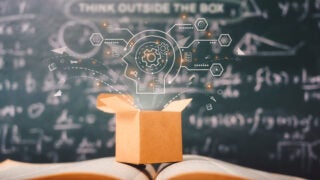The honor recognizes innovation that has a real impact on the welfare of society.
Chemistry
News Listing
The USC Dornsife professor’s prolific work had recently earned him an appointment to the National Academy of Inventors.
Professors are implementing sustainable processes and using equipment that generates less heat — and that’s just the start.
We can’t live without water, of course. But the H20 molecule itself is quite remarkable. Find out why.
USC grads Kyle McClary and John Paul Francis are bringing imaging technology out of the lab and onto researchers’ laptops and cellphones.
A chemist by training and an entrepreneur by trade, Tony Atti has transformed a discarded 200-year-old invention into cutting-edge technology that could change the cooling world.
Professor Stephen Bradforth took a chance on Ryan McMullen’s expensive and potentially dangerous student proposal. It’s led to a new understanding of what defines a metal — and the cover of Science magazine.
The findings from USC researchers provide a clear path to uncovering new drugs to control addiction, pain and neurological disorders such as epilepsy and muscle spasticity.
USC scientists may have solved the storage problem that has long slowed the spread of renewables.
Deeply affected as a child by the Rwandan genocide, Robert Nshimiyimana volunteers to help the underserved, works to make compounds that may reduce harmful inflammation — and hopes one day to help his home nation reach its full, unified potential.









